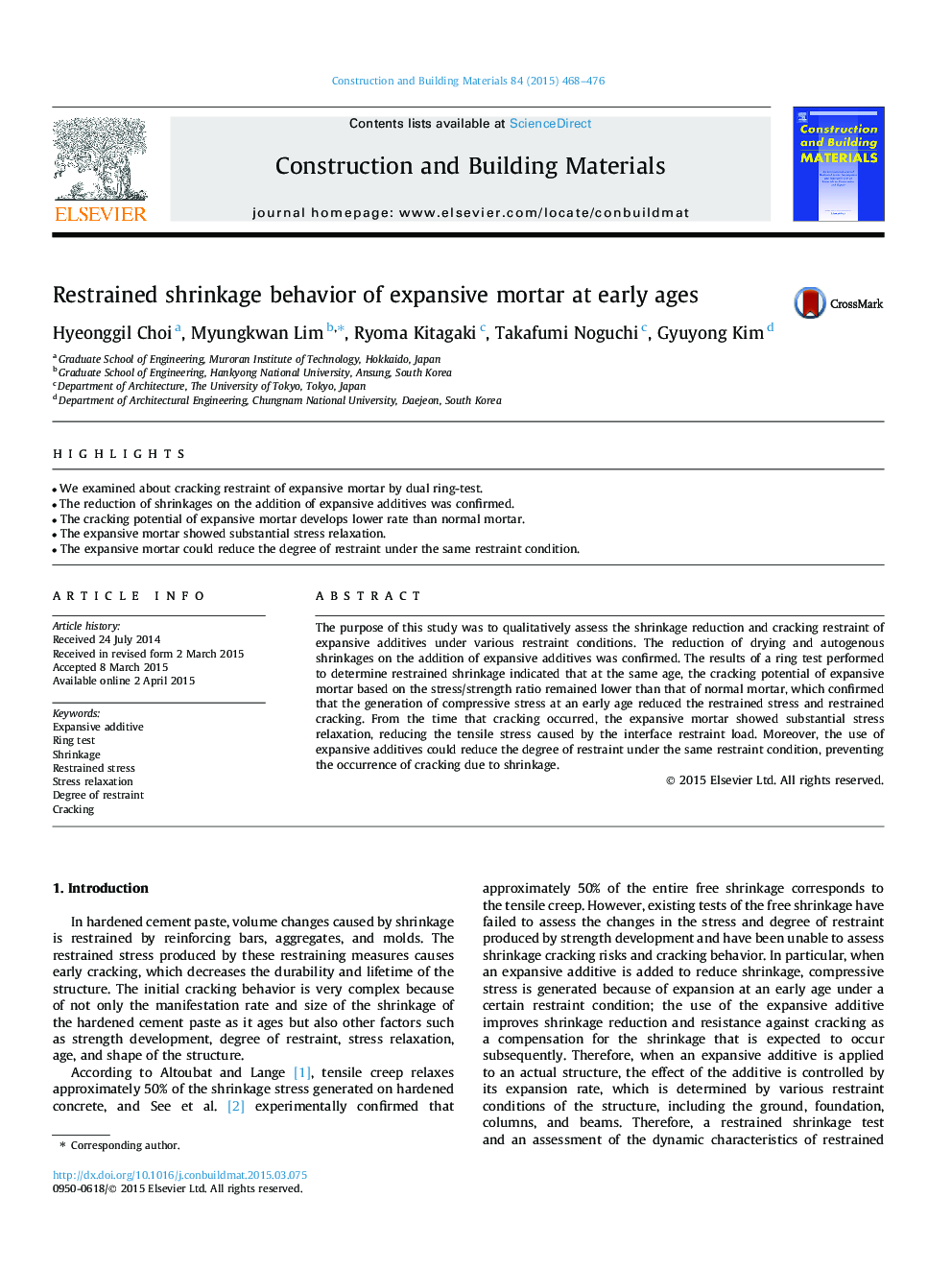| Article ID | Journal | Published Year | Pages | File Type |
|---|---|---|---|---|
| 257082 | Construction and Building Materials | 2015 | 9 Pages |
•We examined about cracking restraint of expansive mortar by dual ring-test.•The reduction of shrinkages on the addition of expansive additives was confirmed.•The cracking potential of expansive mortar develops lower rate than normal mortar.•The expansive mortar showed substantial stress relaxation.•The expansive mortar could reduce the degree of restraint under the same restraint condition.
The purpose of this study was to qualitatively assess the shrinkage reduction and cracking restraint of expansive additives under various restraint conditions. The reduction of drying and autogenous shrinkages on the addition of expansive additives was confirmed. The results of a ring test performed to determine restrained shrinkage indicated that at the same age, the cracking potential of expansive mortar based on the stress/strength ratio remained lower than that of normal mortar, which confirmed that the generation of compressive stress at an early age reduced the restrained stress and restrained cracking. From the time that cracking occurred, the expansive mortar showed substantial stress relaxation, reducing the tensile stress caused by the interface restraint load. Moreover, the use of expansive additives could reduce the degree of restraint under the same restraint condition, preventing the occurrence of cracking due to shrinkage.
